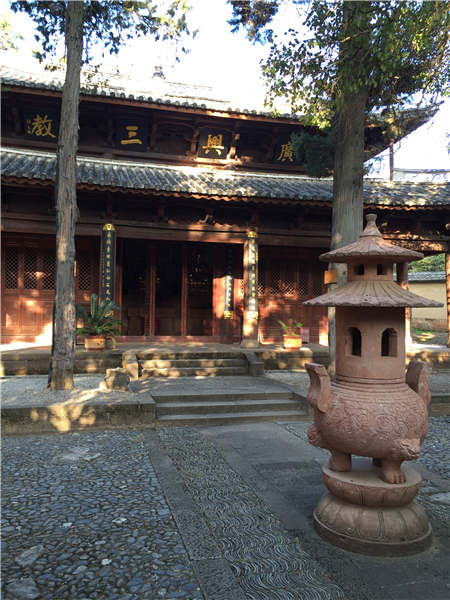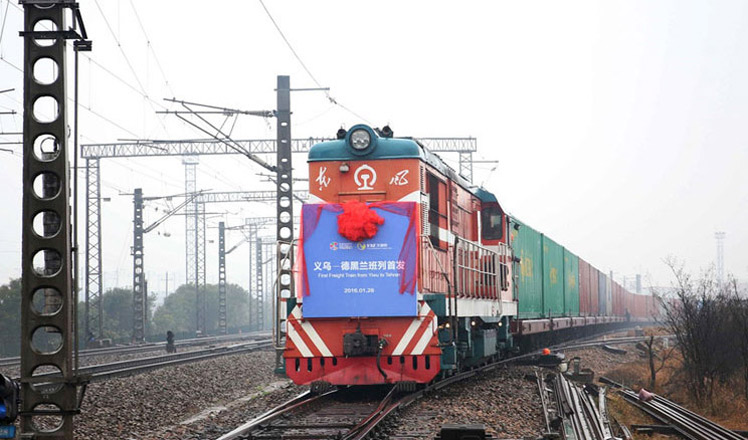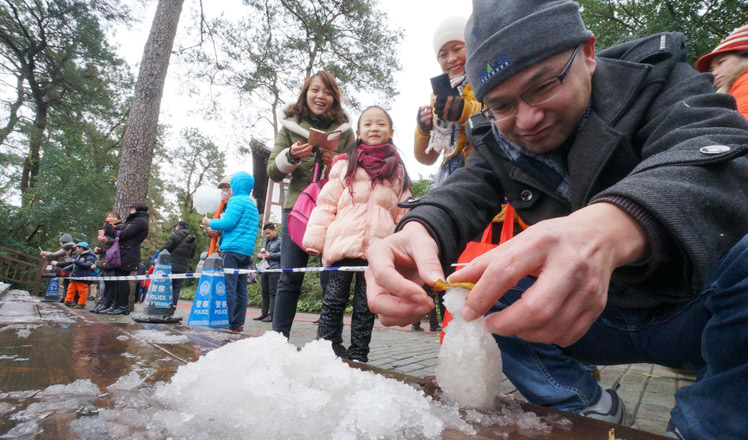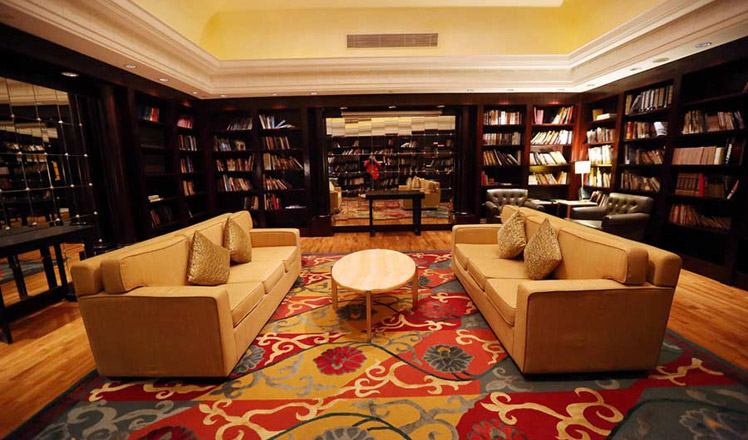A slice of ancient folk culture
Updated: 2016-01-30 07:23
By Yang Feiyue(China Daily)
|
||||||||
 |
|
Xingjiao Temple in the Sideng street |
The local government is now hoping to use Shaxi's aboriginal environment and folk customs to develop tourism and help locals get out of poverty.
The township's Sideng Street has a lot of cultural heritage, including the Xingjiao Temple and an ancient stage.
The town reflects the role of Shaxi in ancient times when horse caravans carrying tea or other products would stop here on their way to Tibet. They would replenish their supplies by bartering their goods with the locals.
Then, visitors would pass their time by watching performances on the central stage or visit the temple to pray for a safe journey to Tibet, says Pu Ligui, executive deputy director of the Jianchuan tourism authority.
The Xingjiao Temple has stood for nearly six hundred years and has murals from the Ming Dynasty.
The temple's wood structure has withstood earthquakes and has been even copied by the Japanese, says Dong Zengxu, an expert in ethnic Bai culture.
The ancient stage in the center of the township was built in the reign of Chinese emperor Kangxi of the Qing Dynasty (1644-1911) and the Bai people would perform ethnic dances and sing there during major holidays, such as the Benzhu celebrations and the Spring Festival. Benzhu is a god worshipped by the Bai people.
In 2002, the World Monuments Heritage Foundation put Sideng Street at 101 on the world's endangered building list.
- Students must learn safety education, experts say
- 73 bodies recovered from rubble of Shenzhen landslide
- Chinese travelers lead 2015 global outbound tourism
- S Korea to issue 10-year visa to highly-educated Chinese tourists
- A glimpse of Spring Rush: little migrant birds on the way home
- Policy puts focus on genuine artistic students
- Negotiating political transition in Syria 'possible': Hollande
- At least three killed in light plane crashes in Australia
- BOJ further eases monetary policy, delays inflation target
- DPRK may have tested components of hydrogen bomb
- Goodwill sets tone at Wang, Kerry's briefing
- Obama picks new Afghan commander

 Djokovic puts down Federer fightback to reach final
Djokovic puts down Federer fightback to reach final
 Treasures from Romania shine in Beijing museum
Treasures from Romania shine in Beijing museum
 First container train links China to Middle East
First container train links China to Middle East
 'Monkey King' performs dragon dance in underwater tunnel in Tianjin
'Monkey King' performs dragon dance in underwater tunnel in Tianjin
 The odd but interesting life of a panda breeder
The odd but interesting life of a panda breeder
 Top 10 best selling cars on Chinese mainland 2015
Top 10 best selling cars on Chinese mainland 2015
 Warm memories in the cold winter
Warm memories in the cold winter
 The world's highest library
The world's highest library
Most Viewed
Editor's Picks

|

|

|

|

|

|
Today's Top News
National Art Museum showing 400 puppets in new exhibition
Finest Chinese porcelains expected to fetch over $28 million
Monkey portraits by Chinese ink painting masters
Beijing's movie fans in for new experience
Obama to deliver final State of the Union speech
Shooting rampage at US social services agency leaves 14 dead
Chinese bargain hunters are changing the retail game
Chinese president arrives in Turkey for G20 summit
US Weekly

|

|








